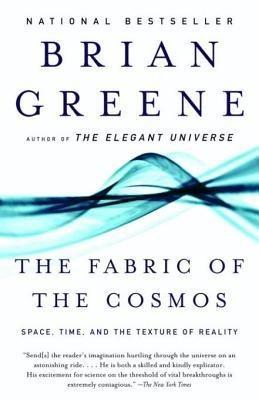
The Fabric of the Cosmos
by
Brian Greene
Published 1 Jan 2003
To give this unseen light-carrying stuff due respect, it was given a name: the luminiferous aether, or the aether for short, the latter being an ancient term that Aristotle used to describe the magical catchall substance of which heavenly bodies were imagined to be made. And, to square this proposal with Maxwell’s results, it was suggested that his equations implicitly took the perspective of someone at rest with respect to the aether. The 670 million miles per hour his equations came up with, then, was the speed of light relative to the stationary aether. As you can see, there is a striking similarity between the luminiferous aether and Newton’s absolute space.
…
The experiments were ultimately shown to be wrong, and the luminiferous aether evaporated from scientific discourse. But What About the Bucket? This is certainly a tidy story for light. Theory and experiment agree that light needs no medium to carry its waves and that regardless of the motion of either the source of light or the person observing, its speed is fixed and unchanging. Every vantage point is on an equal footing with every other. There is no absolute or preferred standard of rest. Great. But what about the bucket? Remember, while many viewed the luminiferous aether as the physical substance giving credibility to Newton’s absolute space, it had nothing to do with why Newton introduced absolute space.
…
The concepts of empty space and of nothingness take on a whole new meaning when quantum uncertainty takes the stage. Indeed, since 1905, when Einstein did away with the luminiferous aether, the idea that space is filled with invisible substances has waged a vigorous comeback. As we will see in later chapters, key developments in modern physics have reinstituted various forms of an aetherlike entity, none of which set an absolute standard for motion like the original luminiferous aether, but all of which thoroughly challenge the naïve conception of what it means for spacetime to be empty. Moreover, as we will now see, the most basic role that space plays in a classical universe—as the medium that separates one object from another, as the intervening stuff that allows us to declare definitively that one object is distinct and independent from another—is thoroughly challenged by startling quantum connections. 4 Entangling Space WHAT DOES IT MEAN TO BE SEPARATE IN A QUANTUM UNIVERSE?

Dealers of Lightning
by
Michael A. Hiltzik
Published 27 Apr 2000
Metcalfe understood that if the line had to carry an electrical current to aid transmission, like a phone line, Murphy’s Law would take over. The line voltage would become the component most vulnerable to failure. But if there was no power on the line, Murphy would be defeated. It was possible and much better, he reasoned, to send messages into a passive medium, like the “‘luminiferous aether’ once thought to pervade the universe as the medium for the propagation of light.” On May 22, 1973, he drafted his first memo describing the concept for PARC’s patent attorneys. Subject: “The ETHER Network.” Soon after that, he met David Boggs for the first time. Meanwhile, Boggs had found his own separate way to PARC—escorted, as had been so many others, by Alan Kay.
…
quality of man-machine interaction: Thacker in Goldberg, p. 272. Chapter 13: The Bobbsey Twins Build a Network He padded over: Metcalfe, “How Ethernet Was Invented,” in IEEE Annals of the History of Computing, vol. 16, no. 4, p. 84. The first time I ever heard: Ted Kaehler, 4/18/97. The ultimate 29-Nova: Metcalfe, p. 83.too many moving parts: Ibid.luminiferous aether: Ibid. There was no chip…every piece of it: Ibid., p. 84; Metcalfe, 9/15/97. Ethernet was up against: Ibid., p. 86. One after another of my colleagues: Ibid., p. 87. Chapter 14: What You See Is What You Get All this was very exhilarating: Lammers, Programmers at Work, p. 9.with an incredible headache: Ibid., p. 8.

The Grand Design
by
Stephen Hawking
and
Leonard Mlodinow
Published 14 Jun 2010
There is no reason to believe that the speed parameter in Maxwell’s equations is a speed measured relative to the earth. His equations, after all, apply to the entire universe. An alternative answer that was considered for a while is that his equations specify the speed of light relative to a previously undetected medium permeating all space, called the luminiferous ether, or for short, simply the ether, which was Aristotle’s term for the substance he believed filled all of the universe outside the terrestrial sphere. This hypothetical ether would be the medium through which electromagnetic waves propagate, just as sound propagates through air. If the ether existed, there would be an absolute standard of rest (that is, rest with respect to the ether) and hence an absolute way of defining motion as well.
…
But Michelson’s purpose had been to measure the speed of the earth relative to the ether, not to prove or disprove the ether hypothesis, and what he found did not lead him to conclude that the ether didn’t exist. No one else drew that conclusion either. In fact, the famous physicist Sir William Thomson (Lord Kelvin) said in 1884 that the ether was “the only substance we are confident of in dynamics. One thing we are sure of, and that is the reality and substantiality of the luminiferous ether.” How can you believe in the ether despite the results of the Michelson-Morley experiment? As we’ve said often happens, people tried to save the model by contrived and ad hoc additions. Some postulated that the earth dragged the ether along with it, so we weren’t actually moving with respect to it.
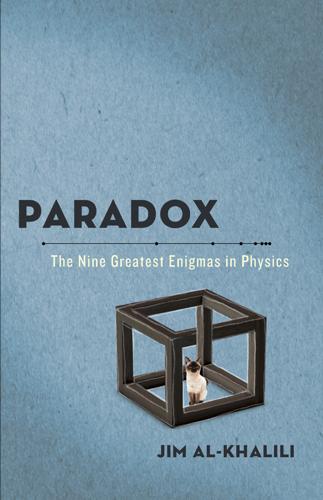
Paradox: The Nine Greatest Enigmas in Physics
by
Jim Al-Khalili
Published 22 Oct 2012
This is because the speed at which the sound waves move ahead of the car is the difference between the speed of the waves in air and the speed of the car. Michelson and Morley applied this principle to light waves. They devised an ingenious experiment—one which they were convinced would be the first to confirm and detect the existence of the luminiferous ether. They began by assuming that the Earth is moving through the ether as it orbits the Sun, which it does at about 100,000 kilometers per hour. In their laboratory experiment they measured, with incredible accuracy, the time it took two light beams to travel along two different paths of equal distance, one in the direction of the Earth’s motion as it orbited the Sun and the other at right angles to it.
…
The second postulate was the revolutionary one, although it sounds quite innocent at first. Einstein stated that light does indeed have the wavelike property that its speed is independent of the speed of its source (just like the sound waves from a moving car). Yet at the same time, and unlike sound waves, light does not require a medium to pass through; the luminiferous ether does not exist and light waves can move across truly empty space. So far, so good; no paradox here—and nothing, you might think, in either of these innocuous postulates that you might have difficulty subscribing to. They certainly don’t sound like statements that lead to a revolutionary view of space and time.
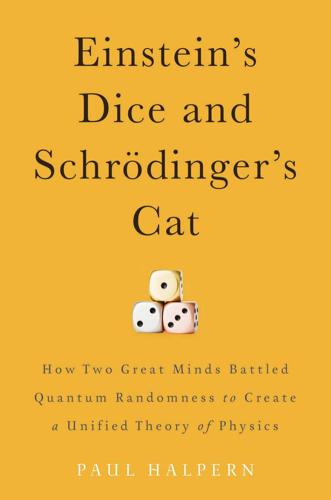
Einstein's Dice and Schrödinger's Cat: How Two Great Minds Battled Quantum Randomness to Create a Unified Theory of Physics
by
Paul Halpern
Published 13 Apr 2015
Only one of them could be right—but which? The idea that the speed of light in a vacuum was constant—or even that light could travel through pure emptiness—was not widely accepted at the time Einstein was pondering this question. Many physicists of the day believed that light moved through an invisible substance called the “luminiferous aether,” or just “aether” for short. Earth’s motion relative to the aether should thereby be detectable. However, a well-known experiment in 1887 by American physicists Albert Michelson and Edward Morley had failed to detect such an effect. To try to reconcile light’s behavior with Newton’s laws of mechanics, Irish physicist Edward FitzGerald and, independently, Dutch physicist Henrik Lorentz suggested that fast-moving objects compress along their directions of motion.

Human Compatible: Artificial Intelligence and the Problem of Control
by
Stuart Russell
Published 7 Oct 2019
Thus, we have a roughly cumulative picture of how intelligent entities can build predictive capabilities, with knowledge as the building material. I say roughly because, of course, science has taken a few wrong turns over the centuries, temporarily pursuing illusory notions such as phlogiston and the luminiferous aether. But we know for a fact that the cumulative picture is what actually happened, in the sense that scientists all along the way wrote down their findings and theories in books and papers. Later scientists had access only to these forms of explicit knowledge, and not to the original sensory experiences of earlier, long-dead generations.
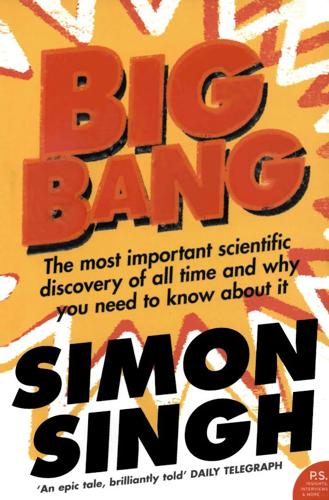
Big Bang
by
Simon Singh
Published 1 Jan 2004
The jar had been evacuated of air, but perhaps there was something remaining inside, something that provided the medium for conveying light. By the nineteenth century, physicists had proposed that the entire universe was permeated by a substance they termed the luminiferous ether, which somehow acted as a medium for carrying light. This hypothetical substance had to possess some remarkable properties, as pointed out by the great Victorian scientist Lord Kelvin: Now what is the luminiferous ether? It is matter prodigiously less dense than air – millions and millions and millions of times less dense than air. We can form some sort of idea of its limitations. We believe it is a real thing, with great rigidity in comparison with its density: it may be made to vibrate 400 million million times per second; and yet be of such density as not to produce the slightest resistance to any body going through it.
…
He once nostalgically referred to the ‘beloved old ether, which is now abandoned, though I personally still cling a little to it’. The crisis of the non-existent ether was magnified because it was supposed to have been responsible for carrying both the electric and magnetic fields as well as light. The dire situation was nicely summarised by the science writer Banesh Hoffmann: First we had the luminiferous ether, Then we had the electromagnetic ether, And now we haven’t e(i)ther. So, by the end of the nineteenth century Michelson had proved that the ether did not exist. Ironically, he had built his career on a whole series of successful experiments relating to optics, but his greatest triumph was the result of a failed experiment.
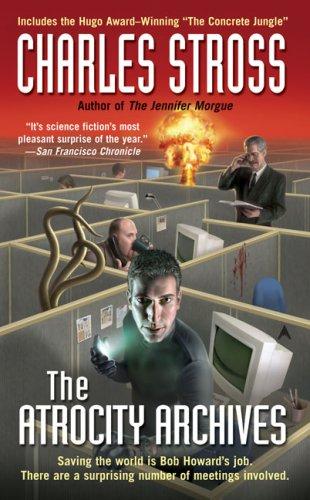
Atrocity Archives
by
Stross, Charles
Published 13 Jan 2004
Just in case you've forgotten, this current is carrying fifteen amps at six hundred volts, and the baseboard is insulated and oriented correctly along a northsouth magnetic axis. The geometry we're using for this run is a modified Minkowski space that we can derive by setting pi to four; there's no fractal dimension involved, but things are complicated slightly because the space to which we're mapping this diagram has a luminiferous aether. Gather round, please, you need to be inside the security cordon when I power up the circuit. Manesh, if you could switch on the ABSOLUTELY NO ENTRY sign . . ." We gather round the test bench. I hover near the back. I've seen similar experiments before: in fact, I've done much more exotic ones in the basement back at Chateau Cthulhu.

Black Box Thinking: Why Most People Never Learn From Their Mistakes--But Some Do
by
Matthew Syed
Published 3 Nov 2015
The library of mammograms could also be indexed to encourage the student to examine a series of related cases to facilitate detection of some critical feature or type of tumor.13 And this takes us back to science, a discipline that has also learned from failure. Just look at the number of scientific theories that have come and gone: the emission theory of vision, Ptolemy’s law of refraction, the luminiferous aether theory, the hollow earth theory, the electron cloud model, the caloric doctrine, phlogiston theory, the miasma theory of disease, the doctrine of maternal impression, and dozens more. Some of these theories were, in practical terms, not much better than astrology. But the crucial difference is that they made predictions that could be tested.

How Emotions Are Made: The New Science of the Mind and Brain
by
Lisa Feldman Barrett
Published 6 Mar 2017
After all, it produces very consistent results.24 Each time a scientific “fact” is overturned it leads to new avenues for discovery. The physicist Albert Michelson won a Nobel Prize in 1907 for disproving a conjecture made by Aristotle, that light travels through empty space via a hypothetical substance called luminiferous ether. His detective work set the stage for Albert Einstein’s theory of relativity. In our case, we’ve cast substantial doubt on the evidence for universal emotions. They only appear to be universal under certain conditions—when you give people a tiny bit of information about Western emotion concepts, intentionally or not.
…
Firestein opens Ignorance with an old proverb, “It is very difficult to find a black cat in a dark room, especially when there is no cat.” This statement beautifully sums up the search for essences. History has many examples of scientists who searched fruitlessly for an essence because they used the wrong concept to guide their hypotheses. Firestein gives the example of luminiferous ether, a mysterious substance that was thought to fill the universe so that light would have a medium to move through. The ether was a black cat, writes Firestein, and physicists had been theorizing in a dark room, and then experimenting in it, looking for evidence of a cat that did not exist. The same applies to the classical view of emotion, whose mental organs are a human invention that mistakes the question for the answer.
…
“something the Fore didn’t do”: Ekman 2007, 7. a set of facial movements: Kudos to the social psychologist Robert Zajonc, who pointed out the embedded assumptions in the word “expression.” of certain Japanese emotion concepts: For examples, see heam.info/japanese-1. emotions as transactions between people: Lutz 1980; Lutz 1983. [back] 24. catalogued many of the concerns: Russell 1994. [back] 25. hypothetical substance called luminiferous ether: Firestein 2012, 22. [back] 26. in the face, body, and voice: The project began with one intrepid young psychologist, David Cordaro; see heam.info/cordaro. [back] 4. The Origin of Feeling 1. and displeasure feel qualitatively different: Pleasure and displeasure are like a sixth sense; see heam.info/pleasure-1. waking moment of your life: Every human language that has been studied has words for “feels good” and “feels bad” (Wierzbicka 1999).

Cosmos
by
Carl Sagan
Published 1 Jan 1980
Light from the Sun reaches us across the intervening empty space, but no matter how carefully we listen, we do not hear the crackle of sunspots or the thunder of the solar flares. It was once thought, in the days before relativity, that light did propagate through a special medium that permeated all of space, called “the luminiferous aether.” But the famous Michelson-Morley experiment demonstrated that such an aether does not exist. We sometimes hear of things that can travel faster than light. Something called “the speed of thought” is occasionally proffered. This is an exceptionally silly notion—especially since the speed of impulses through the neurons in our brains is about the same as the speed of a donkey cart.
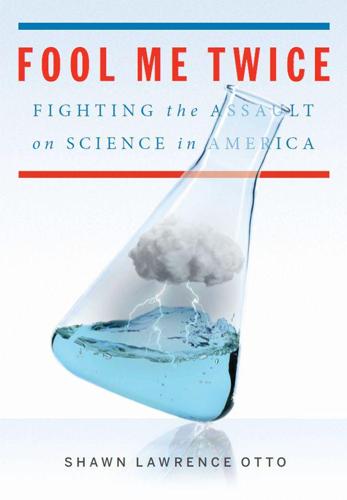
Fool Me Twice: Fighting the Assault on Science in America
by
Shawn Lawrence Otto
Published 10 Oct 2011
; “it is impossible to perform an experiment to determine whether Einstein’s theory of relativity is correct, or the older Lorentz aether theory is correct. Believing one over the other is a matter of faith”; and “In Genesis 1:6–8, we are told that one of God’s first creations was a firmament in the heavens. This likely refers to the creation of the luminiferous aether.” The battle between social identity belonging and natural skepticism shows that people never completely give up their respect for science. This requires people with authoritarian or antiscience vested interests to build elaborate explanations to get around it, like postmodernism, climate science denial, and Conservapedia—all of them finely constructed rhetorical arguments, but none of them science.

When Einstein Walked With Gödel: Excursions to the Edge of Thought
by
Jim Holt
Published 14 May 2018
He had recently read a book by Henri Poincaré, a French mathematician of enormous reputation, that identified three fundamental unsolved problems in science. The first concerned the “photoelectric effect”: How did ultraviolet light knock electrons off the surface of a piece of metal? The second concerned “Brownian motion”: Why did pollen particles suspended in water move about in a random zigzag pattern? The third concerned the “luminiferous ether” that was supposed to fill all of space and serve as the medium through which light waves moved, the way sound waves move through air, or ocean waves through water: Why had experiments failed to detect the earth’s motion through this ether? Each of these problems had the potential to reveal what Einstein held to be the underlying simplicity of nature.
…
Lewis, David “Library of Babel, The” (Borges) Lichtenstein, Sarah life, absurdity of Life magazine Ligeti, György Linde, Andrei Lingua Franca linguistics Lobachevsky, Nikolai locality, principle of Locke, Don Locke, John Loewer, Barry logicism London Review of Books London School of Economics Long-Term Capital Management Look magazine Los Alamos National Laboratory Lovelace, Ada Byron Lovelace, Lord Love and Math (Frenkel) Lucretius luminiferous ether Lusitanian circle Luzin, Nikolai MacArthur, General Douglas MacFarquhar, Larissa Mackerel Plaza, The (De Vries) Mackie, J. L. Mac Lane, Saunders Maclean, Donald Major League Baseball Manchester, University of Mandelbrot, Benoit Mandelbrot, Szolem MANIAC (Mathematical and Numerical Integrator and Computer) manic depression Manutius, Aldus Man in the White Suit, The (film) Man Who Knew Too Much, The (Leavitt) mapmaking, four-color conjecture for Marcus, Gary Marcus, Ruth Barcan “Marcus, Kripke, and the Origin of the New Theory of Reference” (Smith) Margalit, Avishai Marx, Groucho Marx, Karl Marx Brothers Marxism Massachusetts Institute of Technology (MIT) Materialism and Empiriocriticism (Lenin) mathematical biology “Mathematical Creation” (Poincaré) Mathematical Intelligencer, The Mathematician’s Apology, A (Hardy) “Mathematician’s Nightmare, The” (Russell) Mathematics Without Apologies (Harris) Mauchly, John Maudlin, Tim Maupertuis, Pierre-Louis Moreau de Maxwell’s demon McAllister, James W.
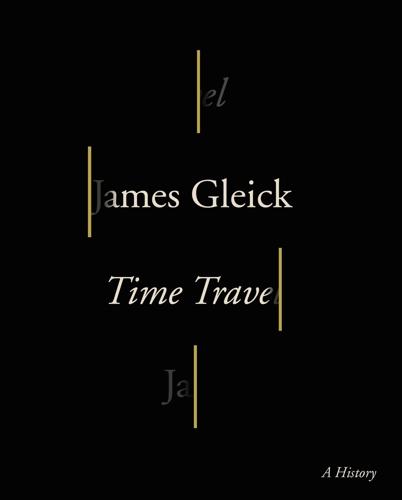
Time Travel: A History
by
James Gleick
Published 26 Sep 2016
Or was it possible to think purely of an electrodynamics of moving bodies, through empty space? We know now that the speed of light in empty space is constant, 299,792,458 meters per second. No rocket ship can overtake a flash of light or reduce that number in the slightest. Einstein struggled (“psychic tension”; “all sorts of nervous conflicts”) to make sense of that: to discard the luminiferous ether, to accept the speed of light as absolute. Something else had to give. On a fine bright day in Bern (as he told the story later), he talked it over with his friend Michele Besso. “Next day I came back to him again and said to him, without even saying hello, ‘Thank you. I’ve completely solved the problem.’
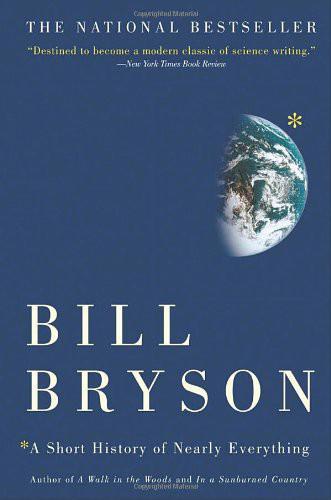
A Short History of Nearly Everything
by
Bill Bryson
Published 5 May 2003
There, in the 1880s, a physicist of early middle years named Albert Michelson, assisted by his friend the chemist Edward Morley, embarked on a series of experiments that produced curious and disturbing results that would have great ramifications for much of what followed. What Michelson and Morley did, without actually intending to, was undermine a longstanding belief in something called the luminiferous ether, a stable, invisible, weightless, frictionless, and unfortunately wholly imaginary medium that was thought to permeate the universe. Conceived by Descartes, embraced by Newton, and venerated by nearly everyone ever since, the ether held a position of absolute centrality in nineteenth-century physics as a way of explaining how light traveled across the emptiness of space.
…
At a stroke, in a simple formula, Einstein endowed geologists and astronomers with the luxury of billions of years. Above all, the special theory showed that the speed of light was constant and supreme. Nothing could overtake it. It brought light (no pun intended, exactly) to the very heart of our understanding of the nature of the universe. Not incidentally, it also solved the problem of the luminiferous ether by making it clear that it didn't exist. Einstein gave us a universe that didn't need it. Physicists as a rule are not overattentive to the pronouncements of Swiss patent office clerks, and so, despite the abundance of useful tidings, Einstein's papers attracted little notice. Having just solved several of the deepest mysteries of the universe, Einstein applied for a job as a university lecturer and was rejected, and then as a high school teacher and was rejected there as well.
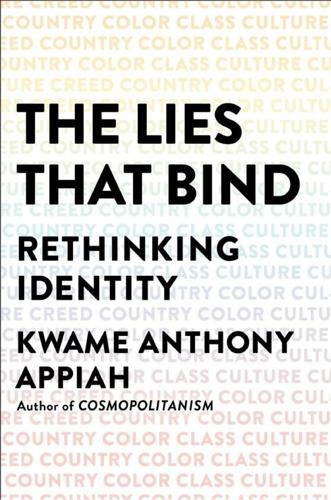
The Lies That Bind: Rethinking Identity
by
Kwame Anthony Appiah
Published 27 Aug 2018
Indeed, it’s possible to feel that if Western culture were real, we wouldn’t spend so much time talking it up. Settling over us like a low-hanging fog, “culture,” however qualified, has been required to do a great deal of work. I admit I have sometimes wondered whether the concept of culture, like the luminiferous ether that nineteenth-century physicists posited as the medium through which light waves traveled, explains rather less than we might hope. Still, such historical and intellectual vagaries did not discourage genuinely distinguished scholars from accepting something like that Plato-to-NATO narrative.

The Glass Universe: How the Ladies of the Harvard Observatory Took the Measure of the Stars
by
Dava Sobel
Published 6 Dec 2016
“I bought [Charles] Young’s Elements of Astronomy,” she told Pickering, “after reading in a newspaper that it was adapted to the humblest capacity—Well there is in ‘every lowest depth a lower deep’ and I fear to fall into it. “Young calls the vast spaces between the stars a vacuum,” Miss Bruce continued, while another book she read by philosopher John Fiske “speaks of it as the luminiferous ether. I shall hold on to Young.” Pickering obligingly provided her with all the Harvard Observatory’s publications, from volumes of the Annals to offprints of his research reports. “Your paper on Variable Stars of Long Periods,” she said in a thank-you note, “I at once read and with admiration— not of the Tables but of the simple goodness of heart shown in the detailed directions to unskilled amateurs how to become useful aids to Science.”

Giving the Devil His Due: Reflections of a Scientific Humanist
by
Michael Shermer
Published 8 Apr 2020
But isn’t the history of science also strewn with the remains of failed theories like geocentrism (the Earth is the center of the solar system), phlogiston (a fire-like element that causes objects to burn), miasma (the “bad air” source of disease), spontaneous generation (fully formed living organisms can abruptly arise out of inanimate matter), and the luminiferous ether (the medium filling outer space for the propagation of light)? Yes, and that’s how we know we’re making progress. The postmodern belief that discarded ideas means that there is no objective reality and that all theories are equal is wronger than all of the wrong theories combined. I have called this Asimov’s Axiom, after an observation by the science writer Isaac Asimov: When people thought the earth was flat, they were wrong.
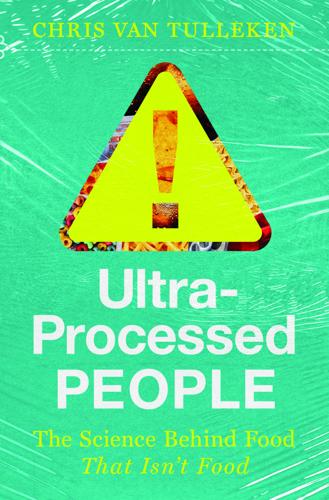
Ultra-Processed People: The Science Behind Food That Isn't Food
by
Chris van Tulleken
Published 26 Jun 2023
Hall published his findings3 and reviewed them in the European Journal of Clinical Nutrition.4 This article was as much about the philosophy of science as it was about nutrition. Hall drew on his physics background to show the principle of falsification, recalling how, in the late nineteenth century, scientists had proposed that light was a wave in something called the ‘luminiferous ether’. The model made intuitive sense, but it was wrong, and several experiments proved this. Hall reiterated that we can’t definitively prove any scientific model. Instead, scientists run a series of experiments and make observations. Only if the model stands up to these tests does it become widely accepted.
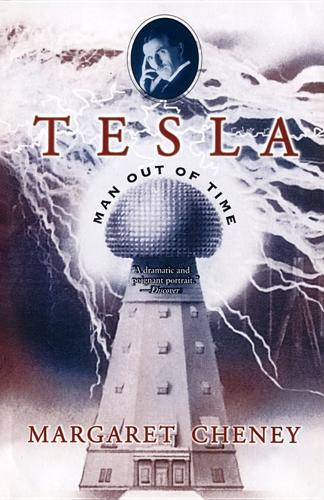
Tesla: Man Out of Time
by
Margaret Cheney
Published 1 Jan 1981
God runs electromagnetics on Monday, Wednesday, and Friday by the wave theory, said Bragg; and the devil runs it by quantum theory on Tuesday, Thursday, and Saturday. Tesla’s thoughts in later life were tending more and more toward a unifying physical theory. He believed that all matter came from a primary substance, the luminiferous ether, which filled all space, and he stoutly maintained that cosmic rays and radio waves sometimes moved more swiftly than light. The younger scientists, most of whom were affiliated with universities, were just beginning to perceive what a garden of earthly delights government-sponsored research could be.
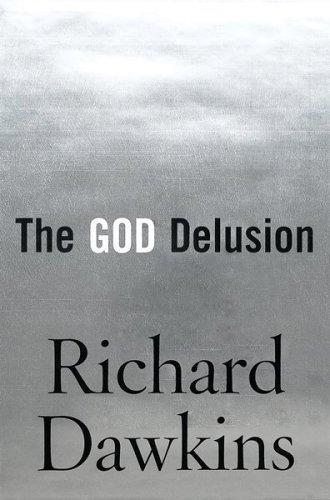
The God Delusion
by
Richard Dawkins
Published 12 Sep 2006
We have this tendency to think that only solid, material ‘things’ are ‘really’ things at all. ‘Waves’ of electromagnetic fluctuation in a vacuum seem ‘unreal’. Victorians thought that waves had to be waves ‘in’ some material medium. No such medium was known, so they invented one and named it the luminiferous ether. But we find ‘real’ matter comfortable to our understanding only because our ancestors evolved to survive in Middle World, where matter is a useful construct. On the other hand, even we Middle Worlders can see that a whirlpool is a ‘thing’ with something like the reality of a rock, even though the matter in the whirlpool is constantly changing.

Lila: An Inquiry Into Morals
by
Robert M. Pirsig
Published 1 Jan 1991
No evidence has been presented that if this portion of the brain is anesthetized or even lobotomized the patient will make a better scientist as a result because all his decisions will then be value-free. Yet we’re told values must reside here, if they exist at all, because where else could they be? Persons who know the history of science will recognize the sweet smell of phlogiston here and the warm glow of the luminiferous ether, two other scientific entities which were arrived at deductively and which never showed up under the microscope or anywhere else. When deduced entities are around for years and nobody finds them it is a sign that the deductions have been made from false premises; that the body of theory from which the deductions are made is wrong at some fundamental level.

The Stuff of Thought: Language as a Window Into Human Nature
by
Steven Pinker
Published 10 Sep 2007
Many psychology experiments have shown that when people have a pet theory of how things work (such as that damp weather causes arthritis pain), they will swear that they can see those correlations in the world, even when the numbers show that the correlations don’t exist and never did.122 The habit of hallucinating causal powers and forcing experience to fit them has shaped human cultures from time immemorial, producing our species’ vast compendium of voodoo, astrology, magic, prayer, idolatry, New Age nostrums, and other flimflam. Even respectable scientists don’t stop at recording correlations but try to pry open nature’s black boxes and identify the hidden powers at work. Sometimes the candidates don’t pan out, like phlogiston or the luminiferous ether, but often they do, as with genes, atoms, and tectonic plates. Another limitation of probabilistic theories of causation is that they apply to averages over the long run (smoking causes cancer) and have nothing to say about the causes of specific events (smoking killed Granny). But people have sharp intuitions about specific events.123 Imagine that Uncle Irv, a two-pack-a-day smoker, is alive and well at ninety-seven.

The Power Makers
by
Maury Klein
Published 26 May 2008
In devising this theory he resorted to the luminiferous (“light-carrying”) ether as the agent bringing matter and electricity together. Few things baffled or divided scientists more than this mysterious substance. As described by Augustin-Jean Fresnel, a French physicist who argued that light consisted of waves, the luminiferous ether was a gaslike substance through which both light and solids somehow moved. A French mathematician, Augustin-Louis Cauchy, worked out a mathematical basis for the properties of ether that made Fresnel’s theory at least plausible if not satisfying to scientists.33 The wave theory of light required that ether be perfectly elastic and offer no resistance to a body passing through it.

Artificial Intelligence: A Modern Approach
by
Stuart Russell
and
Peter Norvig
Published 14 Jul 2019
It might seem obvious that at some level humans manipulate symbols—in fact, the anthropologist Terrence Deacon’s book The Symbolic Species (1997) suggests that this is the defining characteristic of humans. Against this, Geoff Hinton, a leading figure in the resurgence of neural networks in the 1980s and 2010s, has described symbols as the “luminiferous aether of AI”—a reference to the non-existent medium through which many 19th-century physicists believed that electromagnetic waves propagated. Certainly, many concepts that we name in language fail, on closer inspection, to have the kind of logically defined necessary and sufficient conditions that early AI researchers hoped to capture in axiomatic form.